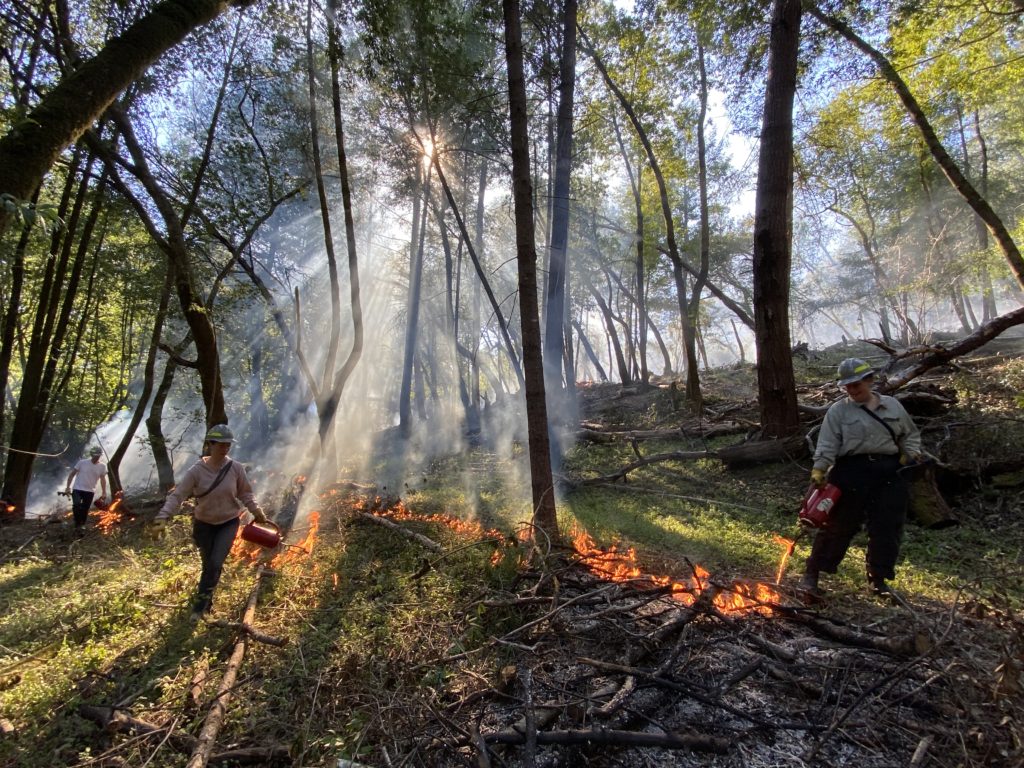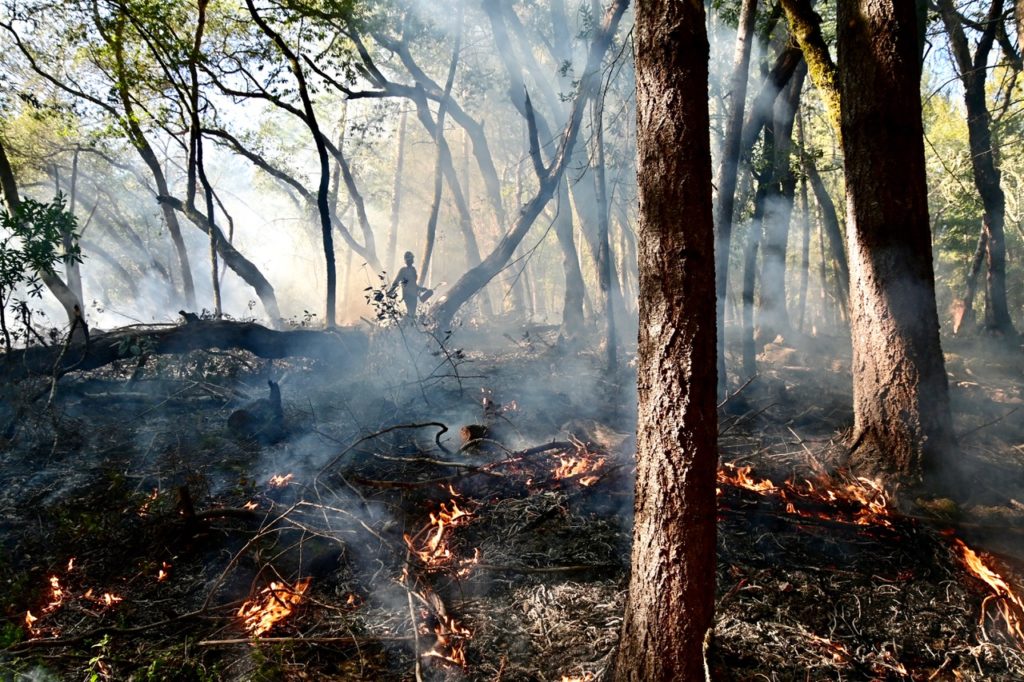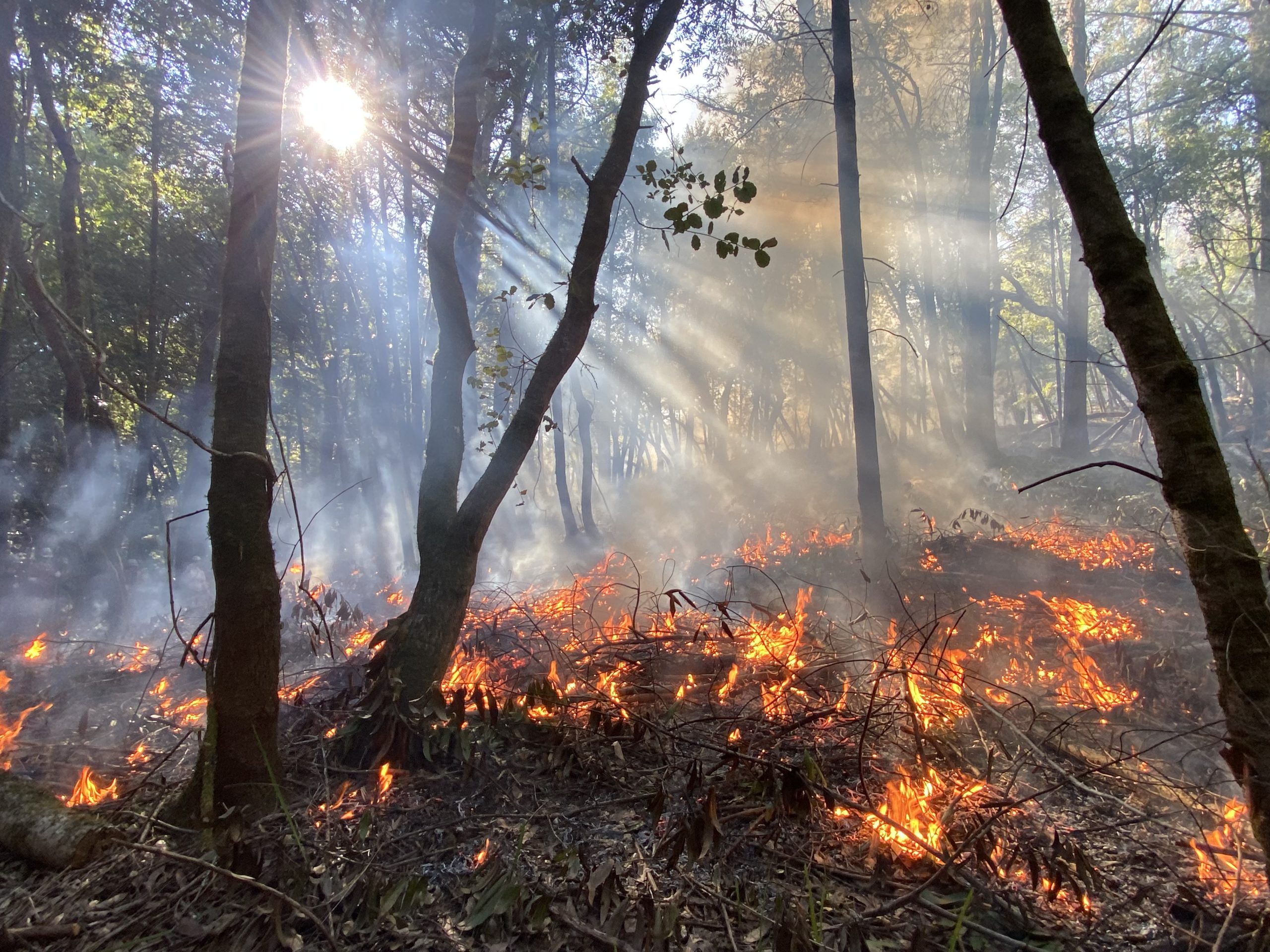photo by Brock Dolman
In late January, with the help of Fire Forward, the OAEC and Sowing Circle community conducted a prescribed burn in a 4-acre woodland unit of our Wildlands Preserve. Although we’ve done numerous small-scale prescribed fires in grassland stands here at OAEC, this is the first time (and hopefully not the last!) that we’ve tackled an understory burn in a forested area. To prep the unit, we worked with OAEC staff, volunteers, and other hired crews to remove hazardous fire ladder fuels like small trees, shrubs, and lower branches that enable fire to climb upward and sustain high-intensity canopy fires.
Beyond prepping the burn area itself, there were a number of steps we had to take in order to put fire on the ground safely. Last year, Fire Forward came out to OAEC to map the burn unit and establish control lines (in our case, using dirt roads and established walking paths). Their team then walked us through the permitting process, developing a Prescribed Burn Plan for the unit and supporting OAEC in getting a Smoke Management Plan approved through our local air district. On the day of, the Fire Forward team split us into small groups to tackle different areas of the unit with drip torches, canisters that drip flaming fuel onto the ground. Starting at the top of the unit, we snaked our way down the hillside in coordinated lines to build heat and cover as much ground as possible. Orchestrating a controlled burn is an art – and by the end of the day, we had gained a new respect for this complex dance of timing, communication, forest conditions, and weather!

OAEC residents ignite low-intensity fire in very targeted areas of the understory using a drip torch. Photo by Brock Dolman.
When thinking about fire in this region – and California more broadly – many imagine the catastrophic, high-intensity fires of the past decade like the Kincade or Walbridge fires. But there is a long, rich history that continues today of Native people using low-intensity fire as a cultural practice and powerful tool to steward land across what is now known as California (and specifically in our area, Coast Miwok and Southern Pomo people). We can think about this type of anthropogenic burning as one of many small-scale “intentional disturbance” strategies like hunting, digging, coppicing, and distributing seed.
Contrary to common thinking about destructive human disturbances upon the environment in the modern era, intentional disturbances employed by Native people were crucial processes that maintained the tremendous biodiversity of flora and fauna of Northern California (for more on this, read M. Kat Anderon’s Tending the Wild: Native American Knowledge and the Management of California’s Natural Resources). The displacement of Native land stewards and the removal of fire and other disturbance regimes from the landscape has over time ruptured the long-established balance of the ecosystem – that is, the rich interplay between people, place, and animal life.

One result of the prescribed burn, in combination with limbing and thinning, is more openness in the understory to prevent the “fire ladder” effect. Photo by Jim Coleman.
We find ourselves today holding this tangled history and trying to bring “good fire” back to the land as a healing force. In that way, our goals are many! Controlled burning benefits the land in a myriad of ways – from cycling nutrients and germinating native seeds, to arresting succession and removing encroaching seedlings. At the top of our list is creating a more fire-resilient landscape that reduces the threat of catastrophic fire, while still allowing fire to function as a regenerative disturbance process in the landscape. We humans are part of that process. So, how can we reassume an integral role as a beneficial part of nature, while tending the diversity of life that surrounds us?
This inquiry is a guiding north star for much of what we do at OAEC, and the path is filled with a whole lot of learning and humility! Fire in particular is a remarkable teacher, and there is so much to discover as we try to restore a healthy relationship with this keystone process. During this winter’s burn, the crew got to experience the multitude of factors that make a fire carry across a landscape successfully or not – from the size of fuels to the slope of a hillside. In our case, the leaf litter beneath the top layer of scattered material (leftover from limbing and thinning) was quite damp and in some areas, didn’t catch as well as we had hoped. But, we’re looking forward to trying again later in the year!
Interested in getting involved in community-based burning in Sonoma County? Check out various opportunities with Fire Forward or sign up for the Good Fire Alliance listserv to stay informed about trainings, workshops, and other opportunities!
The OAEC controlled burn is featured in this article in Bay Nature Magazine! Read more.






